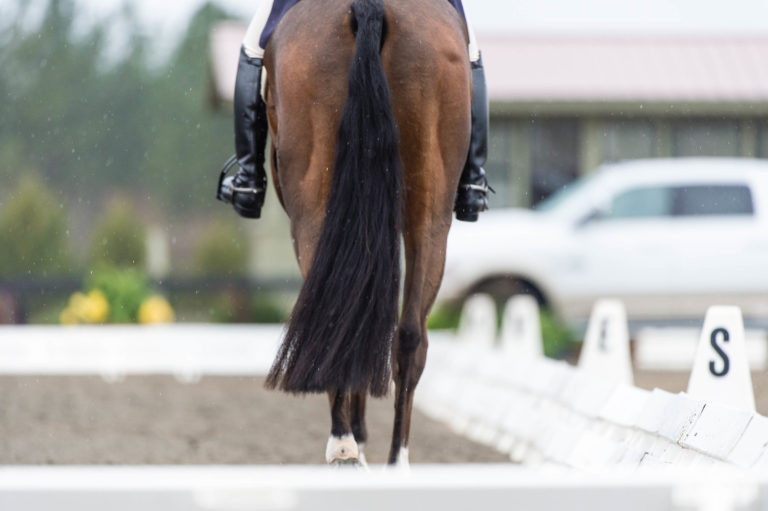Q: When riding a rein-back, my horse steps sideways instead of straight. How can I fix this? —Marylou Higgins of Riverside, California
A: First, be sure there are no physical reasons why your horse is backing crooked. Have him checked by a chiropractor or veterinarian for leg and back or pelvis issues. Horses evade engagement—like that required in a rein-back—if it is painful to bend the joints. Have his teeth checked as well. If you have ever had tooth pain, you know how uncomfortable and painful it can be—and for horses, it can cause a myriad of evasions. Next, have his saddle fit checked by a professional saddle fitter. If it is pinching in some funny way during the rein-back, it may be causing your horse to attempt to avoid the pinch and step crooked.

Amy K. Dragoo
Once you have eliminated all physical issues, think through the definition of a rein-back and the correct aids to be sure you are not sending the wrong message, trying to correct your horse rather than yourself, the rider.
The rein-back as defined by the Fédération Equestre Internationale (FEI) Judges Handbook as “a rearward diagonal movement with a two-beat rhythm but without a moment of suspension. Each diagonal pair of legs is raised and returned to the ground alternately with the forelegs aligned on the same track as the hind legs.” It goes on to state: “Anticipation or precipitation of the movement, resistance to or evasion of the contact, deviation of the hindquarters from the straight line, spreading or inactive hind legs and dragging forefeet are serious faults.”
Make sure in your mind that you are focused on asking your horse to step backward in a slow, clear rhythm. Many riders make the mistake of moving into the rein-back too quickly, causing the horse to fling himself backward, out of balance and, hence, crooked.
Use the correct symmetrical aids:
- Halt your horse, making sure he is standing squarely on all four legs. Have a ground person watch from directly in front of or behind you to make sure you are sitting tall and straight and even on both seat bones with your legs resting quietly on your horse’s sides.
- Without leaning backward, tuck your seat under you and close your legs as if you were going to walk off.
- Once your horse attempts to move forward, lighten your seat slightly, close your fingers, slide your legs slightly behind the girth and ask him to step backward one step.
- If he takes one step, halt, reward and do it again, one step at a time.
Make sure that each of your legs is at the same spot on the horse and that your hands are even. Frequently, riders have one hand or leg aid that is stronger than the other. This can force the horse’s haunches to swing in one direction rather than step straight back.
If you are schooling alone and do not have mirrors, you or your horse may be slightly crooked without realizing it. If you begin the rein-back and your horse steps out sideways, halt. Then slide the leg on that side farther back to block the haunches and take one more step back. You may need to use a leading rein to help your horse rebalance.
Finally, remember that rein-backs take strength, coordination and the ability to lower the croup to take the weight on the hind leg. Mentally, it is submission that can be a challenge. Take it slowly and give your horse time to understand what you are asking.

This article first appeared in the October 2012 issue of Dressage Today magazine.
Linda Schultz is a USDF bronze and silver medalist and an associate instructor. She was a participant in the 2009 Young Dressage Horse Trainer’s Symposium. Author of Better Rider, Better Ride: Get Fit To Create Riding Breakthroughs, she trains at Legacy USA Equestrian in Burr Ridge, Illinois (legacyusastables.com).











